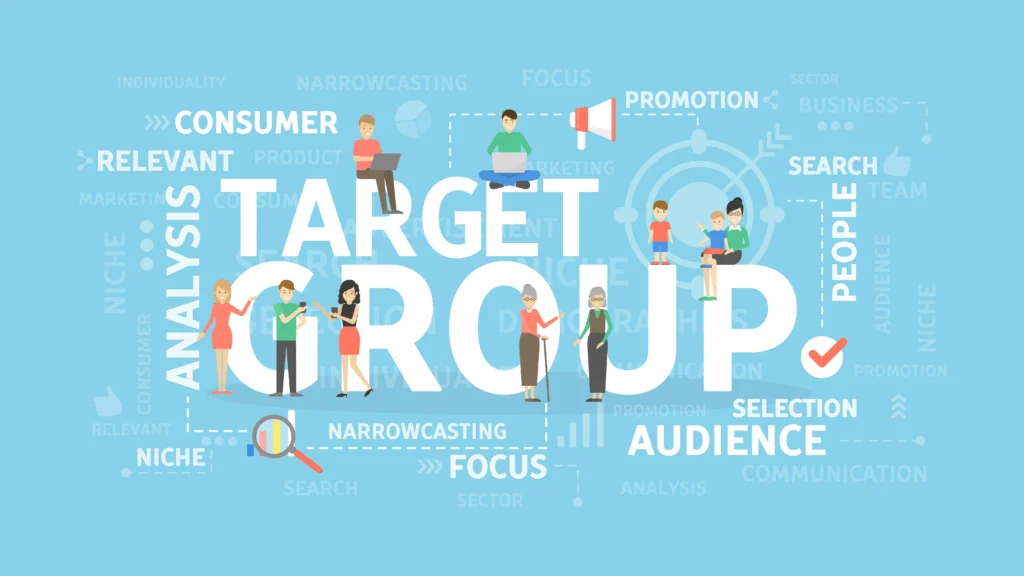We are navigating through the digital marketplace of today, trying to get a bunch of emails across to your target audience, like shouting in a crescendo. So, fear not, for cold email marketing emerges as perhaps a potent weapon in your arsenal.
Essentially, cold email marketing is a process of sending emails to people who could be your potential customers for your products or services but have never shown interest in them. It’s this sort of outreach or strategic contact that can generate the spark that inflames deep conversations, relationships, and leads.
How Cold Email Marketing Works
In their essence, cold email marketing is a strategic form of email outreach that targets those who would greatly benefit from your offering but have not yet engaged with your brand. Essentially, this is an outgoing way to create leads and prospect sales to open new business opportunities. Let’s begin with major steps underlying the discussed process.
1. Identifying Your Target Audience
More than anything else, the cornerstone of any successful cold email marketing campaign lies in precise targeting. That is to say, it should reach the right people, not just any people. Accurately reaching the ideal prospect can only be done by highly exigent research.
Factors to Consider:
- Industry: What industries do your products or services serve?
- Company Size: Are you trying to reach small businesses, enterprises, or something in between?
- Job Title: Who are the most likely to make purchasing decisions in or influence them in these organizations?
- Pain Points: What are your target audience headaches or problems that your offerings can solve?

Leveraging Databases:
To streamline finding and reaching out to your target audience, make sure you connect with other companies through B2B contact databases like ZoomInfo. Such databases open up access to verified business contacts-complete with information on company, job title, and most importantly, email address-so you fine-tune outreach to ensure that cold emails end up in the inboxes of actual decision-makers holding the keys to new opportunities for your business.
2. Crafting Compelling Emails
Your cold email, in many ways, is like a virtual handshake-it’s the first impression. As such, it needs to be good. You want to send personalized and interesting messages that mean something to those receiving them.
Key Elements of a Compelling Cold Email:
- Subject Line: Interesting and relevant, and teasing curiosity without resorting to clickbait approaches.
- Opening: Attention is to be drawn immediately; hence, a personalized greeting with a short introduction.
- Value Proposition: State, in pretty clear detail, the benefits of your product or service and how it is a fit for their pain points.
- Call to Action: Give them a clear, actionable next step, whether it be to schedule a call, download a resource, or just go to your website.
- Signature: Your name, title of position, company, and contact information for easy follow-up.
Remember, personalization is key. Some generic, mass emails just go directly to the trash. Take a few moments to personalize the messages you send to each individual, referring to their specific industry, company, or even an accomplishment that recently took place. This shows you have taken the time to do your homework and are actually interested in their needs.
3. Building Your Email List
A well-curated list is always the base behind every cold email outreach. The activity indeed requires effort and has to be committed towards ethical and compliant practices.
Here are some of the main strategies for list building organically:
Content Marketing
Produce high-quality blog posts, e-books, or webinars that can attract your target audience, thereby asking them to opt into your mailing list.
Social Media Engagement
Engage your target audience through the use of social media platforms and share great content to encourage subscription to your list.
Lead Magnets
Provide prospects with free templates, checklists, or white papers in exchange for their email address.
Networking Events
Network at conferences and trade shows by engaging with prospective customers and gathering contact information
Avoid buying an email list. Besides being a bad practice, it can drastically harm your sender reputation and thus send your emails to spam folders.
4. Sending Your Emails
Once you have a targeted email list and all your compelling messages ready to go, it’s time to hit send. First and foremost, you should be using an email marketing platform that’s dependable to manage and automate your cold email campaigns. These platforms offer a host of features to streamline your efforts, including:
- Automation: Schedule emails to send at the best times, set up drip campaigns, and trigger follow-up emails based on recipient behavior.
- Personalization: Auto-insert recipient first names, company names, and other details in the emails you send.
- Analytics: Track open rates, click-through rates, and other key metrics to measure the success of your campaigns.
- Deliverability: Making sure that your emails are delivered in the inbox and not in spam boxes.

Popular Cold Email Marketing Platforms:
- Lemlist: It is pretty well known for its robust personalization and automation.
- Mailshake: It is user-friendly and also has built-in A/B testing and analytics
- Woodpecker: Focuses on deliverability and helps you navigate the complexities of spam filters.
- HubSpot: is an all-rounded marketing automation with powerful email marketing features.
Choose one that fits your budget and level of expertise and fulfills your needs.
5. Tracking and Analyzing Results
Cold email marketing is not a fit-it-and-forget thing. It continuously requires careful considerations and optimizations one after another. Trace KPIs like:
- Open Rate: The percentage of recipients who open your emails.
- Click-Through Rate (CTR): This metric determines the number of recipients clicking on a link in the email.
- Conversion Rate:Conversions can be anything-from making a purchase to scheduling a call.
- Bounce Rate: If for any reason your e-mail cannot reach your recipient’s inbox, then it is said to have bounced.
Analyze this data for insight on what is working and what isn’t. Try different subject lines, email copy, calls to action, and times of send to see your results incrementally improve..
Different Types of Email Marketing
While cold email marketing is powerful in and of itself, it is integral to understand how it fits into the broad architecture of email marketing. Let’s consider some of the other common types of email marketing:
- Warm Email: As opposed to a cold email, a warm email is one that is sent to a list of people who have generated a certain level of interest in your brand. Perhaps they could have signed up for a newsletter, downloaded something, or even shown engagement on your social media. Warm emails boast better open rates and click-through rates compared to cold emails, since the recipients have already crossed the first milestone of being exposed to your brand.
- Transactional Email: These are emails that get triggered automatically on the occurrence of certain actions or events. These may include order confirmation, shipment notification, password reset, and changes to account information, among many other things. In other words, transactional emails ensure that one has a smooth customer experience and keeps your audience informed.
- Nurture Email: The series of emails that is considered to take the prospects through the sales funnel and create relationships over time. Great content, easing pain points, and nurture leads to a buying decision.
Success Rates of Cold Email Marketing
Cold email marketing, when strategically and thoughtfully employed, works. The average open rate for cold emails lies between 15% and 25%, while the click-through rate varies between 2% to 5%. Of course, these figures can go up or down depending on many factors like industry, accuracy in targeting, and quality of your email content.
Factors Affecting Cold Email Success Rates:
- Relevance: The degree to which your offer is aligned with the recipient’s needs or interests.
- Personalization: How tailored your emails are to the person receiving it.
- Subject Line: How efficient your subject line is at drawing opens.
- Email Copy: Clear, concise, and persuasive in message.
- Call to Action: How appealing and clear your call to action is.
- Timing: The day and time you send your emails.
- Sender Reputation: Your domain’s reputation and history of sending emails.
Pay extra attention to these points, and through constant refinement, you can increase manifold the success rate for cold email campaigns.
Need All-In-One Marketing Solution?
Conclusion
Cold emailing still remains, in this digital era, one of the most important ways businesses scale and get in touch with potential customers. By getting the basics right, targeting perfectly, writing persuasively, and using the right platforms, you can tap into cold email marketing to achieve your business objectives.
Remember, cold email marketing is not all about sending emails; it’s about building bridges and having conversations that blossom into long-lasting relationships. You can make cold emails warm by adopting a value-driven approach and personalization to drive your business ahead. My Business Integrated is here to help you with reaching your full potential. Get in touch with us today.





2 Responses
Great guide! Cold emailing can be a powerful tool when done right. It’s important to focus on providing value and building relationships rather than just blasting out sales pitches. Thanks for sharing the insights!
I appreciate the valuable information provided in this blog post. I do, however, believe that the section on the different types of email marketing could be enhanced to include additional types, such as direct mail and email newsletters.